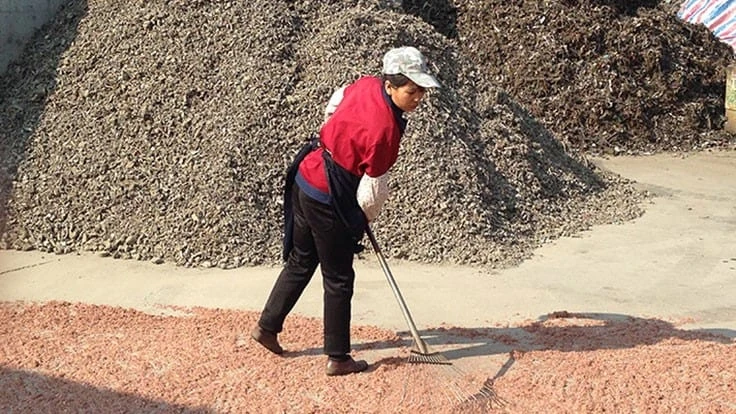
Photo by Brian Taylor.
The issuance of a new batch of scrap import quotas in mid-May by the People’s Republic of China tells part of the story taking place in that nation’s basic materials and manufacturing sectors.
Producers of aluminum, copper and paper in China all have reportedly been lobbying the Chinese government to improve access to overseas scrap materials. (China’s steel industry largely has access to as much ferrous scrap as it needs.)
Paramount in the lobbying effort is asking the government to reconsider an outright ban originally scheduled to take place at the end of 2020. In the red metal sector, governments at the provincial level have reportedly been taking their own measures to bolster scrap-reliant copper producers.
In the paper sector, a recovered fiber broker in the midwestern United States said the pulping mill in Byron, Wisconsin, owned by Hong Kong-based Nine Dragons Paper helped create upward pressure for old corrugated container (OCC) prices in the first four months of 2020.
According to the broker, that mill was attempting to make and ship to China as much pulp as it could produce to help fill the domestic OCC supply shortfall in China. That shortfall was exacerbated when China’s economy shrank in February and early March because of COVID-19 restrictions.
China’s economy also produced far less nonferrous scrap while many of its people stayed at home to avoid COVID-19. Now, as the nation’s industry sector gets back to work, it is facing a raw materials shortfall because much of the rest of the world has restricted its mining, production and scrap collecting activities.
An Asia-based metals trader says international sales of nonferrous scrap are easy to make—but filling the orders is proving more difficult. Buyers in China and other parts of Asia have been ramping up their melt shops at the same time scrap yards in North America and Europe are seeing 30-to-60 percent volume decreases.
Processors in America and Europe have been able to supply aluminum scrap grades to Asia in part because the auto industry on those two continents has been on hiatus. Starting in late May, however, demand for aluminum scrap in North America and Europe is likely to revive.
Reuters commodity beat writer Andy Home says the combination of persistent and temporary conditions is making China’s pledge to restrict red metal imports increasingly questionable.
In a May 18 essay, Home states directly, “China is short of copper scrap. This is largely a problem of its own making. China has steadily restricted imports of a material officially designated as ‘waste’ during its broader war on pollution.”
He notes that lobbying within the People’s Republic helped lead to the repeal of a prior 25 percent tariff on red metal scrap arriving from the United States. It is one sign, writes Home, that China’s government has “relented under pressure from its own copper sector, which was panicking about the loss of a major component of China’s copper supply chain.”
Home mentions that some higher grades of copper scrap have been reclassified from being a waste to either a resource or raw material.
Additionally, he points to the Asian scrap processing sector’s geographic move from China to Malaysia. This has caused some scrap exporters to be more comfortable dealing with Malaysian bureaucracy rather than inspection, customs, environmental and financial authorities in China.
The concern on the mind of both Home and front-line traders is whether “just as China has reopened its doors to copper scrap imports, even those from the United States, it’s likely to find there’s not much there.”
Latest from Recycling Today
- Greenwave Technology pares back losses in Q3
- Lindner shredders prepare Brazilian plastic for recycling
- China ups steel output while other nations cut back
- ReElement, Posco partner to develop rare earth, magnet supply chain
- Comau to take part in EU’s Reinforce project
- Sustainable packaging: How do we get there?
- ReMA accepts Lifetime Achievement nominations
- ExxonMobil will add to chemical recycling capacity





